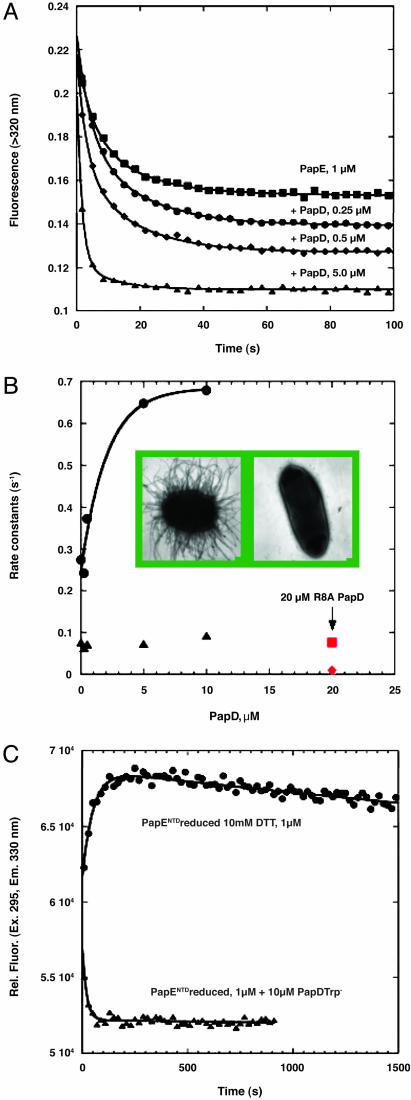Fig. 3.
The effect of PapD on the refolding properties of PapENTD.(A) Kinetics of refolding of PapENTD after a 1:11 dilution (1 μM final concentration) from 5 to 0.45 M urea in the absence of PapDTrp- (▪) and in the presence of 0.25 (•), 0.5 (♦), and 5 (▴) μM PapDTrp-. The data were fit to a sum of two exponentials, and the fits are the solid lines through the data. (B) The rate constants for the two phases of refolding of PapENTD as a function of concentration of PapDTrp- (• and ▴) and in the presence of 20 μM PapDR8ATrp- (red square and diamond). Inset shows bacteria (MC4100) expressing the pap operon encoded in the plasmid pDH1 (papD-) complemented with wild-type papD in pLS101 (Left) or with papDR8A (Right) (23). (C) Kinetics of refolding of reduced PapENTD (1 μM) in the absence (•) and presence (▴) of PapDTrp- (10 μM). The data for the refolding in the absence of PapDTrp- were fit to a sum of two exponentials, and the data with PapDTrp- were fit to a single exponential and are the solid lines through the data. All experiments were performed in 20 mM Mes/OH (pH 6) at 20°C with 10 mM DTT.

